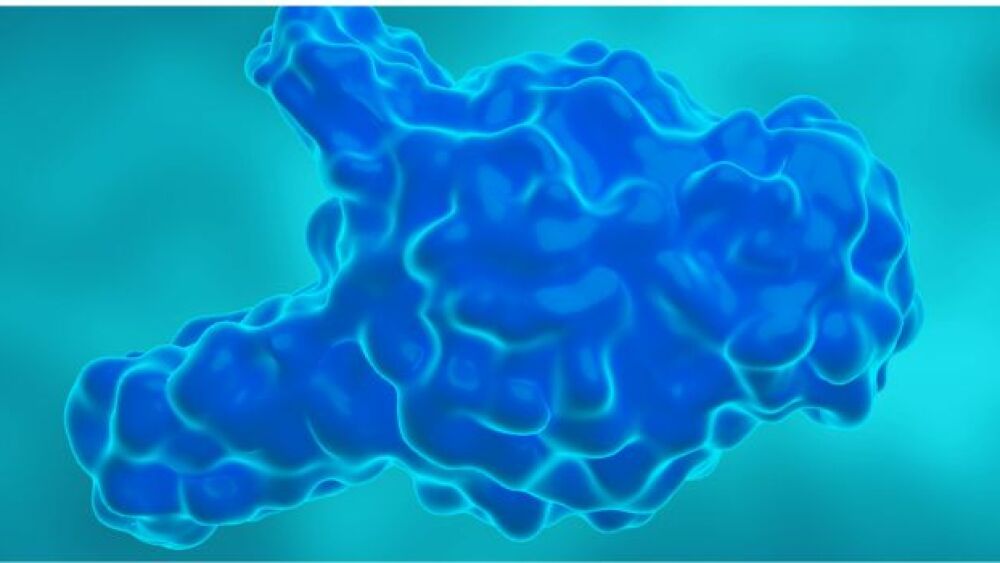EXPLORER-HCM Cardiac Imaging Data Presented at AHA 2020 Scientific Session with Simultaneous Publication in Circulation
- EXPLORER-HCM Cardiac Imaging Data Presented at AHA 2020 Scientific Session with Simultaneous Publication in Circulation
- Mavacamten Treatment Resulted in Favorable Effect on Cardiac Structure -- Significantly Reduced Hypertrophy in Patients with Hypertrophic Cardiomyopathy
BRISBANE, Calif., Nov. 15, 2020 (GLOBE NEWSWIRE) -- MyoKardia, Inc. (Nasdaq: MYOK) announced results from its cardiac magnetic resonance imaging (CMR) substudy of mavacamten for the potential treatment of hypertrophic cardiomyopathy (HCM) showing that 30-week treatment with mavacamten has a favorable effect on cardiac structure, while maintaining contractile function within the normal range. These data were shared today in an oral presentation titled, “Mavacamten Favorably Impacts Cardiac Structure in Obstructive Hypertrophic Cardiomyopathy: EXPLORER-HCM CMR substudy” (Oral Session 18654), at the American Heart Association’s Scientific Sessions 2020 during the High Profile Clinical Science in CVD session. Data from the EXPLORER-HCM CMR substudy were also published simultaneously in Circulation.
The CMR substudy was conducted as part of MyoKardia’s pivotal Phase 3 EXPLORER-HCM clinical trial in patients with symptomatic, obstructive HCM to assess the impact of once-daily treatment with mavacamten on parameters of cardiac structure and function. Thirty-five patients were enrolled in the CMR substudy and randomized to mavacamten (n=17) or placebo (n=18) and had valid CMR assessments at day 1 and week 30 (end of treatment) which were analyzed centrally in a blinded manner. Statistically significant changes from baseline to Week 30 were observed in the mavacamten group vs. placebo for the primary endpoint of left ventricular mass index (p<0.0001), as well as exploratory endpoints of absolute intracellular myocardial mass index, maximum wall thickness, and maximum left atrial volume index (all p<0.001 for the difference from placebo). From baseline to Week 30, there was no worsening in myocardial fibrosis, another common characteristic of HCM.
“Hypertrophic cardiomyopathy is defined by the thickening of the heart muscle, so to see favorable remodeling of the heart indicating a lessening of hypertrophy within 30-weeks of treatment is a highly encouraging finding for the many patients struggling with HCM,” said Sara Saberi, M.D., Assistant Professor in the Division of Cardiovascular Medicine and member of the Inherited Cardiomyopathy Program at the University of Michigan Medical School, and lead author on the study. “The CMR substudy is the first randomized, controlled clinical trial of HCM patients to show that a once-daily oral therapeutic agent can reduce left ventricular wall thickness and mass, and positively impact several other parameters of cardiac structure and function. Left ventricular hypertrophy and left atrial volumes in particular are predictive of poor prognosis in HCM patients, so it will be exciting to see how mavacamten impacts cardiac function and disease progression as we continue to follow patients over time.”
Changes in left ventricular hypertrophy and left atrial volumes were observed concurrently with reductions in levels of plasma biomarkers of myocardial stress and injury, consistent with echocardiographic observations from the overall EXPLORER-HCM population. Importantly, the reduction in left ventricular mass index correlated with a reduction in high-sensitivity cardiac troponin I.
“Data from the CMR substudy complements and extends our observations of mavacamten’s positive benefits on cardiac function and symptom relief, providing us with encouraging evidence that mavacamten treatment may change the course of the adverse cardiac remodeling inherent to HCM. In directly targeting the proteins of the heart muscle that lead to the excessive contraction and impaired relaxation underlying HCM, we have a growing body of data showing that mavacamten is reducing hypercontractility and hypertrophy and reducing harm to the cardiac muscle while maintaining contractile function within the normal range,” said Jay Edelberg, M.D., Ph.D., MyoKardia’s Chief Medical Officer.
As previously reported, results from EXPLORER-HCM demonstrated that patients treated with mavacamten experienced statistically significant and clinically meaningful improvements in symptoms, functional status and key aspects of quality of life. In addition to meeting the primary and all secondary endpoints, mavacamten was well tolerated with a safety profile similar to placebo. MyoKardia plans to submit a New Drug Application for mavacamten to the U.S. Food and Drug Administration (FDA) in the first quarter of 2021.
About EXPLORER-HCM
The EXPLORER-HCM Phase 3 trial enrolled a total of 251 patients with symptomatic (NYHA Class II or III), obstructive hypertrophic cardiomyopathy. All participants had measurable LVOT gradient (resting and/or provoked) ≥50 mmHg at baseline. Patients were randomized on a 1:1 basis to receive individualized once-daily dosing of mavacamten or placebo. Patients started on a dose of 5mg, with up to two opportunities for dose adjustments (to doses of 2.5mg – 15mg) based on a combination of residual LVOT gradient, drug plasma concentration and left ventricular ejection fraction (LVEF) levels.
The primary endpoint for EXPLORER-HCM was a composite functional analysis designed to capture mavacamten’s effect on both symptoms and function. The composite functional endpoint is defined by either (1) the achievement of a ≥1.5mL/kg/min improvement in peak VO2 accompanied by an improvement of ≥1 NYHA functional class, or (2) the achievement of a ≥3.0mL/kg/min improvement of peak VO2 with no worsening in NYHA functional class. In addition to the endpoints reported today, the EXPLORER-HCM study also assessed mavacamten’s effect on patient-reported outcomes, health-related quality-of-life and symptom severity assessments, changes from baseline to Week 30 in echocardiographic indices, circulating biomarkers, cardiac rhythm patterns and accelerometry.
About MyoKardia
MyoKardia is a clinical-stage biopharmaceutical company discovering and developing targeted therapies for the treatment of serious cardiovascular diseases. The company is pioneering a precision medicine approach to its discovery and development efforts by 1) understanding the biomechanical underpinnings of disease; 2) targeting the proteins that modulate a given condition; 3) identifying patient populations with shared disease characteristics; and 4) applying learnings from research and clinical studies to inform and guide pipeline growth and product advancement. MyoKardia’s initial focus is on small molecule therapeutics aimed at the proteins of the heart that modulate cardiac muscle contraction to address diseases driven by excessive contraction, impaired relaxation, or insufficient contraction. Among its discoveries are three clinical-stage therapeutics: mavacamten (formerly MYK-461); danicamtiv (formerly MYK-491) and MYK-224.
MyoKardia’s mission is to change the world for people with serious cardiovascular disease through bold and innovative science.
Forward-Looking Statements
Statements we make in this press release may include statements which are not historical facts and are considered forward-looking within the meaning of Section 27A of the Securities Act of 1933, as amended, and Section 21E of the Securities Exchange Act of 1934, as amended, which are usually identified by the use of words such as "anticipates," "believes," "estimates," "expects," "intends," "may," "plans," "projects," "seeks," "should," "will," and variations of such words or similar expressions. We intend these forward-looking statements to be covered by the safe harbor provisions for forward-looking statements contained in Section 27A of the Securities Act and Section 21E of the Securities Exchange Act and are making this statement for purposes of complying with those safe harbor provisions. These forward-looking statements, including statements regarding the clinical and therapeutic benefit and future potential of mavacamten, the ability of our long-term studies to provide further evidence of how mavacamten impacts cardiac function and disease progression over time, the ability of our long-term studies to provide further evidence of mavacamten’s potential to positively impact several other parameters of cardiac structure and function, that mavacamten treatment may change the course of the adverse cardiac remodeling inherent to HCM, and mavacamten’s ability to reduce harm to the cardiac muscle while maintaining contractile function within the normal range, reflect our current views about our plans, intentions, expectations, strategies and prospects, which are based on the information currently available to us and on assumptions we have made. Although we believe that our plans, intentions, expectations, strategies and prospects as reflected in or suggested by those forward-looking statements are reasonable, we can give no assurance that the plans, intentions, expectations or strategies will be attained or achieved. Furthermore, actual results may differ materially from those described in the forward-looking statements and will be affected by a variety of risks and factors that are beyond our control including, without limitation, risks associated with the development and regulation of our product candidates and any ongoing effects of the COVID-19 pandemic, as well as those set forth in our Quarterly Report on Form 10-Q for the quarter ended September 30, 2020, and our other filings with the SEC. Except as required by law, we assume no obligation to update publicly any forward-looking statements, whether as a result of new information, future events or otherwise.
Contacts
Michelle Corral
Executive Director, Corporate Communications and Investor Relations
MyoKardia, Inc.
650-351-4690
ir@myokardia.com
Hannah Deresiewicz (investors)
Stern Investor Relations, Inc.
212-362-1200
hannah.deresiewicz@sternir.com
Julie Normant (media)
W2O
628-213-3754
jnormart@w2ogroup.com




